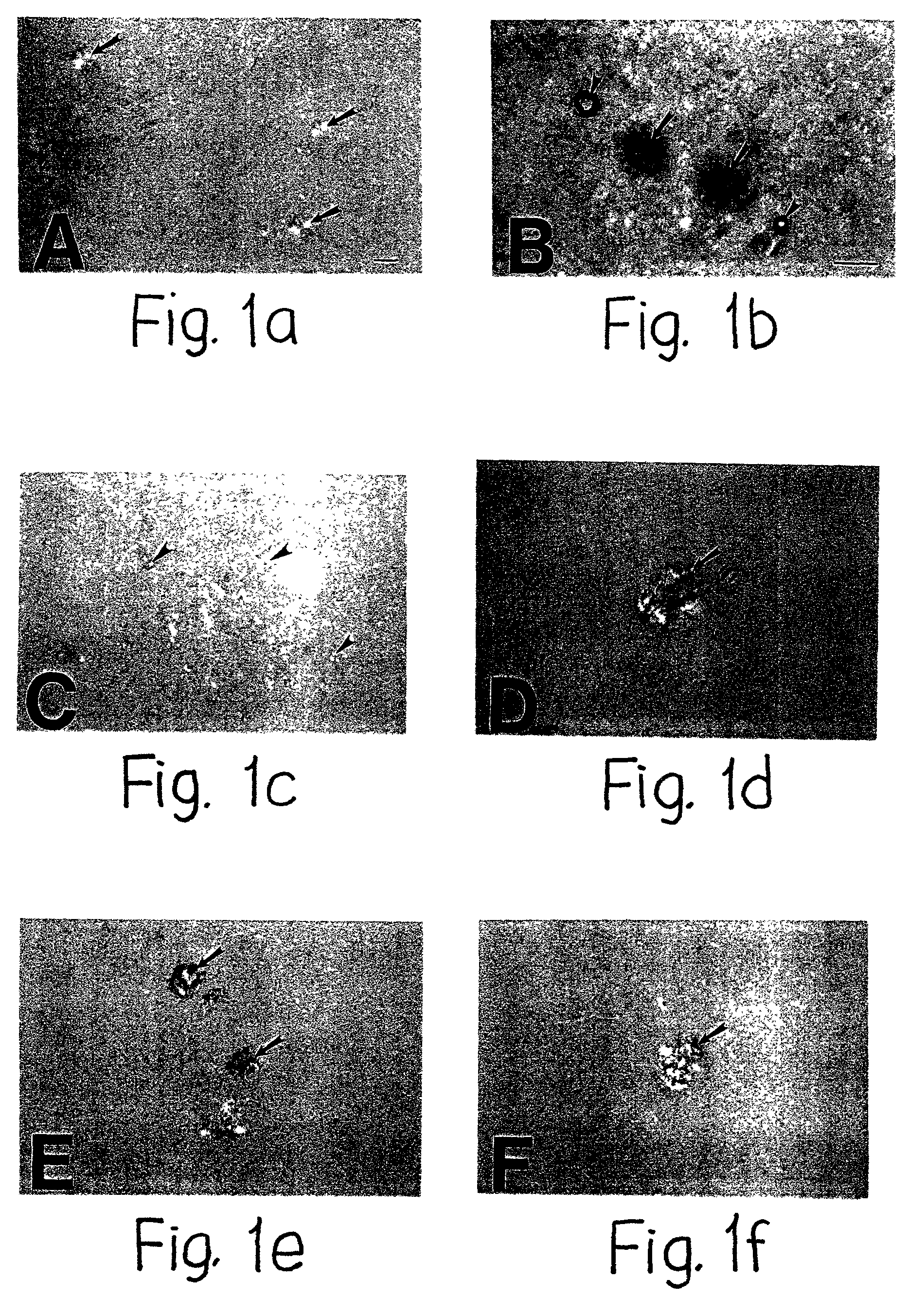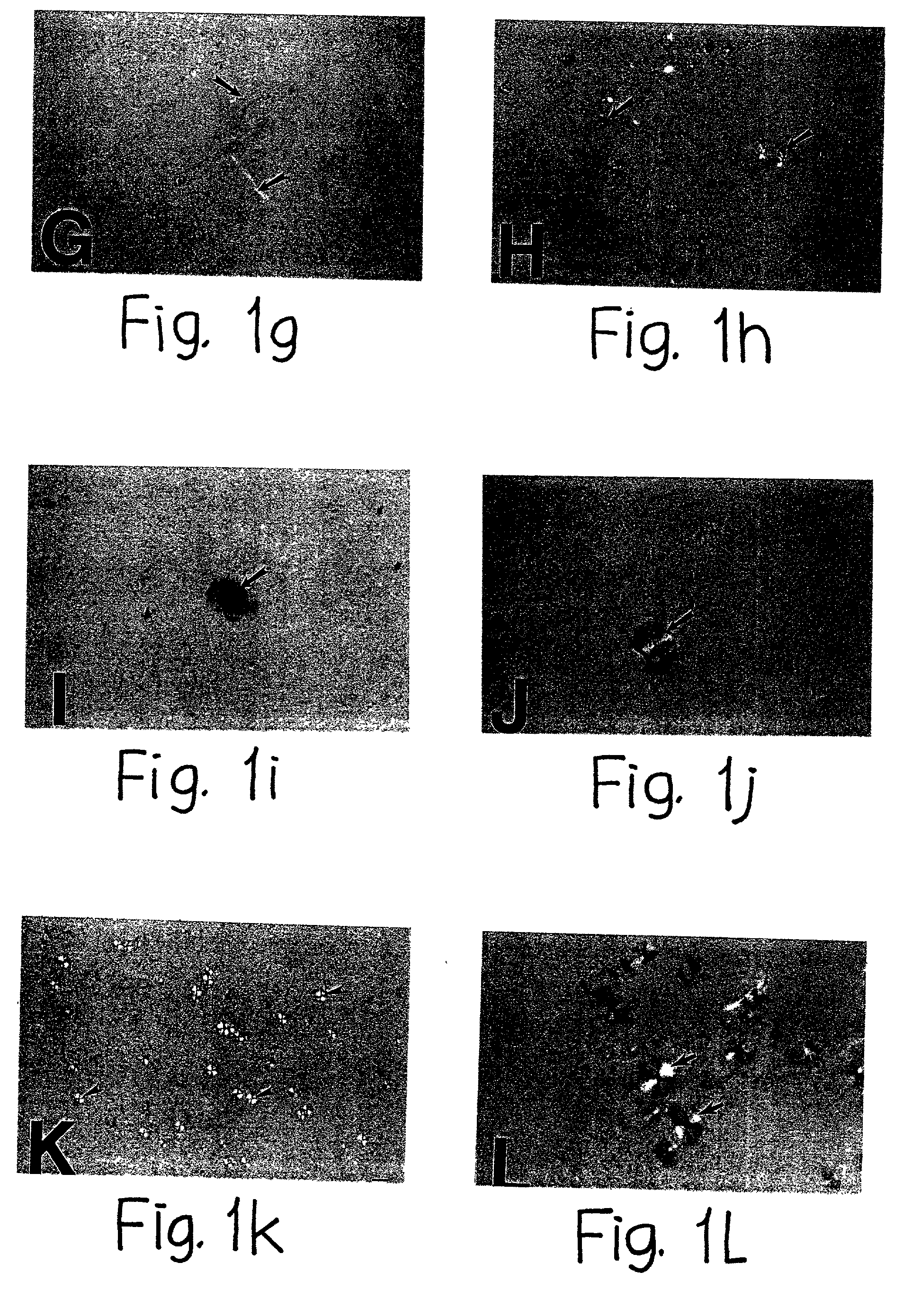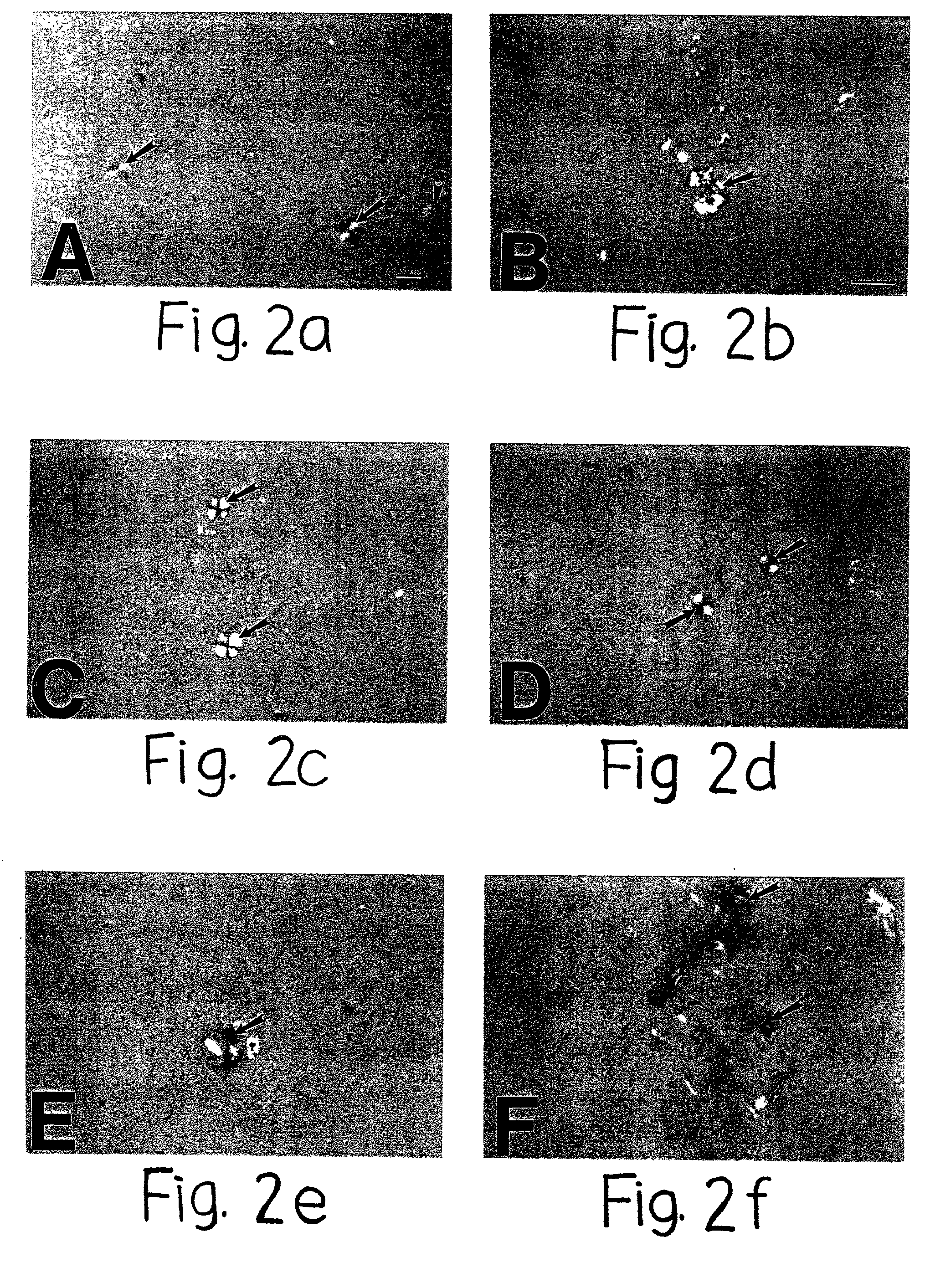In vitro formation of congophilic maltese-cross amyloid plaques to identify anti-plaque therapeutics for the treatment of Alzheimer's and Prion diseases
a technology of amyloid plaques and amyloid cells, which is applied in the field of methods, can solve the problems of toxic and neuronal cell death, the mechanism of conversion and the essential components involved have never been elucidated, and the formation of compact plaques in vitro which demonstrate a maltese-cross pattern when stained with congo red and viewed under polarized light have never been achieved, so as to test the effect of effectiveness
- Summary
- Abstract
- Description
- Claims
- Application Information
AI Technical Summary
Problems solved by technology
Method used
Image
Examples
example 1
Induction of Amyloid Plaque Core Formation by Perlecan but Not Other Amyloid Plaque Co-Components
[0087]Various co-components known to be present in amyloid plaques in human Alzheimer's disease brain were tested for their potential ability to induce congophilic maltese-cross, compact amyloid plaque formation including P component (Coria et al, Lab. Invest. 58:454–458, 1988), alpha1-antichymotrypsin (Abraham et al, Cell 52:487–501, 1988), ApoE (Nambaet al, Brain Res. 541:163–166, 1991; Strittmatteret al, Proc. Natl. Acad. Sci. USA 91:11183–11186, 1994; Strittmatter and Roses, Proc. Natl. Acad. Sci. USA 92:4725–4727, 1995), C1q (Eikelenboom et al, Virchows Arch. B Cell Pathol. 56:259–262, 1989; McGeer et al, Can. J. Neurol. Sc. 16:516–527, 1989; Rogers, CNS drugs 4:241–244, 1994), C3 (Eikelenboom et al, Virchows Arch. B Cell Pathol. 56:259–262, 1989; McGeer et al, Can. J. Neurol. Sc. 16:516–527, 1989; Rogers, CNS drugs 4:241–244, 1994), and perlecan (Snow et al, Am. J. Path. 133:456–46...
example 2
Induction of Amyloid Plaque Core Formation by Highly Sulfated Glycosaminoglycans (i.e. Heparan Sulfate and Heparin)
[0097]Since perlecan is a known to contain glycosaminoglycans (GAGs) of the heparan sulfate class, the next study was implemented to determine whether heparan sulfate and / or other sulfated GAGs were also capable of inducing congophilic maltese-cross amyloid plaque formation. Previous studies have demonstrated that besides heparan sulfate GAGs, a number of other classes of GAGs are found in association with amyloid plaques in human Alzheimer's disease brain, including dermatan sulfate containing PGs (specifically decorin)(Snow et al, J. Histochem. Cytochem., 40:105–113, 1992), keratan sulfate PGs (specifically synaptoglycan)(Snow et al, Exp. Neurol. 138:305–317, 1996) and chondroitin sulfate GAGs (DeWitt et al, Exp. Neurol. 121:149–152, 1993). Therefore, sulfated GAGs including heparin, heparan sulfate, chondroitin-4-sulfate, chondroitin-6-sulfate and dermatan sulfate we...
example 3
Induction of Compact Amyloid Plaque Formation by Other Sulfated Macromolecules (i.e. Dextran Sulfate, Pentosan Polysulfate and Polyvinyl Sulphonate)
[0101]The induction of compact amyloid plaque formation by highly sulfated GAGs such as heparin and heparan sulfate GAGs, suggested that the sulfate content of GAGs maybe critical for the formation of congophilic maltese-cross amyloid plaques. The next study therefore tested the hypothesis that similar amyloid plaque induction could also be induced by other highly sulfated macromolecules. Therefore, other highly sulfated macromolecules including dextran sulfate (with unsulfated dextran for comparison), pentosan polysulfate, Congo red and polyvinyl sulphonate were tested for their potential ability to also induce congophilic maltese-cross amyloid plaque formation. For these studies, 25 μM of Aβ 1–40 or Aβ 1–42 (Bachem Inc., Torrance, Calif.) was incubated in double distilled water or Tris-buffered saline (pH 7.4) for 1 week at 37° C. eith...
PUM
| Property | Measurement | Unit |
|---|---|---|
| diameter | aaaaa | aaaaa |
| diameter | aaaaa | aaaaa |
| pH | aaaaa | aaaaa |
Abstract
Description
Claims
Application Information
 Login to View More
Login to View More - R&D
- Intellectual Property
- Life Sciences
- Materials
- Tech Scout
- Unparalleled Data Quality
- Higher Quality Content
- 60% Fewer Hallucinations
Browse by: Latest US Patents, China's latest patents, Technical Efficacy Thesaurus, Application Domain, Technology Topic, Popular Technical Reports.
© 2025 PatSnap. All rights reserved.Legal|Privacy policy|Modern Slavery Act Transparency Statement|Sitemap|About US| Contact US: help@patsnap.com



